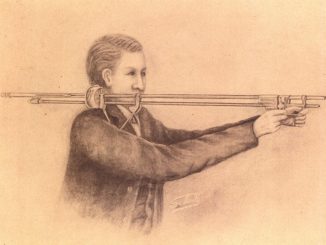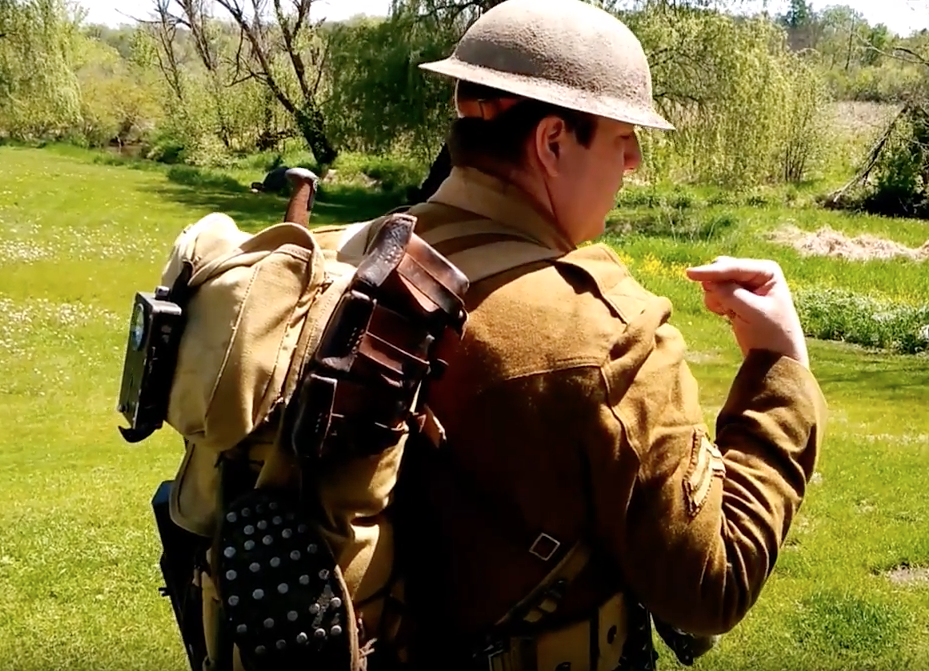Today I’m taking an SVT-40 to the monthly 2-Gun Action Challenge Match, and I’m joined by my friend Tom shooting an M1 Garand. We’re both using moderately accurate gear, and so naturally I have a TT-33 Tokarev for my pistol and Tom has a 1911. So, let’s see if I can hold my own with the Soviet guns…
Related Articles

bullpup
Curtis 1866: The First Bullpup – with Jonathan Ferguson
Join the Kickstarter campaign and preorder your copy of Jonathan’s “Thorneycroft to SA80: British Bullpup Firearms 1901 – 2020”! Sorry for the poor audio quality – today I am back at the Cody Firearms Museum […]

Vintage photo
Vintage Saturday: A View of No-Man’s-Land
I’m hard-pressed to think of anything humorous to say about this snapshot – World War I does not lend itself well to glorification or joviality. I suppose it’s simply worth considering that if you think […]

Accessories
US Uniforms of WWI: Interesting Details
I had another post planned for today, but found this video pretty interesting. It’s a look at what the US troops were actually wearing in WWI – when they shipped over to Europe, in the […]

How about a match with a Lee Enfield and Browning High-Power vs. Japanese bolt action rifle and pistol?
Bart:
No British soldier would have had a High Power in the war against Japan. An Enfield revolver would have been more appropriate.
I have seen pictures of British soldiers, at least in Europe, with High Powers. Were they not issued in the Pacific? Where can info on what the British issued in the Pacific be found?
Okay, the miracle of the Internet answered by question. Here are two links to look at;
https://www.militaryfactory.com/smallarms/ww2-british-guns.php
https://www.militaryfactory.com/smallarms/ww2-japanese-guns.php
The British did use Browning/FN High Powers, but this was generally for paratroopers and special function forces. The more general distribution were revolvers.
From the link above, only semi-auto pistols are listed for the Japanese.
If someone was kitted up as a British paratrooper, or sneaky operative, it would be period correct to have a High Power. This would allow apples to apples comparison to a Japanese soldier with a semi-auto Japanese pistol. And even giving the Japanese soldier a Luger would be correct as the Japanese captured many when they occupied the Dutch Asian territories or they were purchased by officers with their own funds.
Bart:
High Powers were very little used by the British until almost the end of the war, and then only by special forces such as Paras. Most of the time you see a Para with an automatic pistol, it will be a 1911. I am not aware of Paras being deployed on any scale against the Japanese. The large majority of pistols used in the Far East would have been Enfield revolvers. They were still the most common British service pistol until the late 1950s.
As Ian noted in a previous post, the main source of HPs for British forces was the John Inglis Co. in Canada, which had literally hundreds that had been contracted for by the Chinese nationalist (Kuomintang) military but could not be delivered due to Japanese occupation of the Chinese coastal areas and ports.
Deliveries of Inglis-made HPs, Brens and etc. were cut off until 1945, and after 1948-49 they were delivered to Formosa.
As Ian noted, up to the late 1960s it was not unusual to find “FN 9mm” pistols in British army armories with Chinese ideographs on the slide instead of a roll-stamp in English.
clear ether
eon
Cool. Pretty sure that chamber flag Ian is using is one I sent him years ago
I owned a SVT-40 a long time ago. A Finnish rework in immaculate condition. Always regretted letting it go. It was so much more comfortable to shoot than the Garand or G-43.
The Bolshevik Budyonovka cap is surely one of the oddest yet designed. Let’s just say it does not look cool.
How about a 2 gun match with the SVT 40 vs the Gewehr 43.
I’ve got a 1943 Mednogorsk-mfr. SVT-40/ ex-AVT-40 with a repurposed SVT-38 trigger assembly. Mine was rode hard, put away wet, and then hot-dip blued and re-shellacked for the long sojourn in some salt mine someplace waiting for WWIII, and then surplused and sold to an outfit in Vermont, and then had various stays in closets and safes in the USA before I got it and put it in my safe.
Mine is particularly ammunition sensitive. Simply no comparison with the dead-bolt reliable Garand rifle I have. Reloading five-cartridges from a stripper clip in the receiver guide isn’t too bad in comparison with the 8-round Garand en bloc clip, but topping the magazine up to all ten takes noticeably longer. Soldat Ivan got three mags with his, but I’ve just got the one. It is a nice magazine design, however.